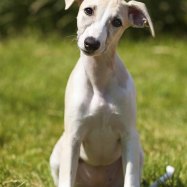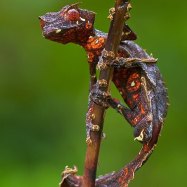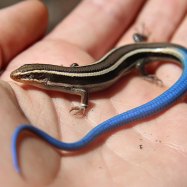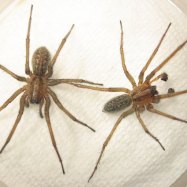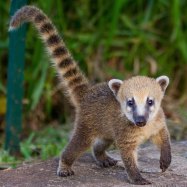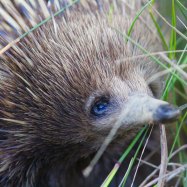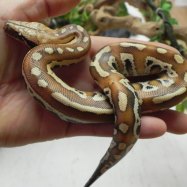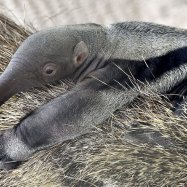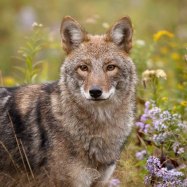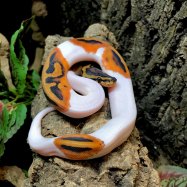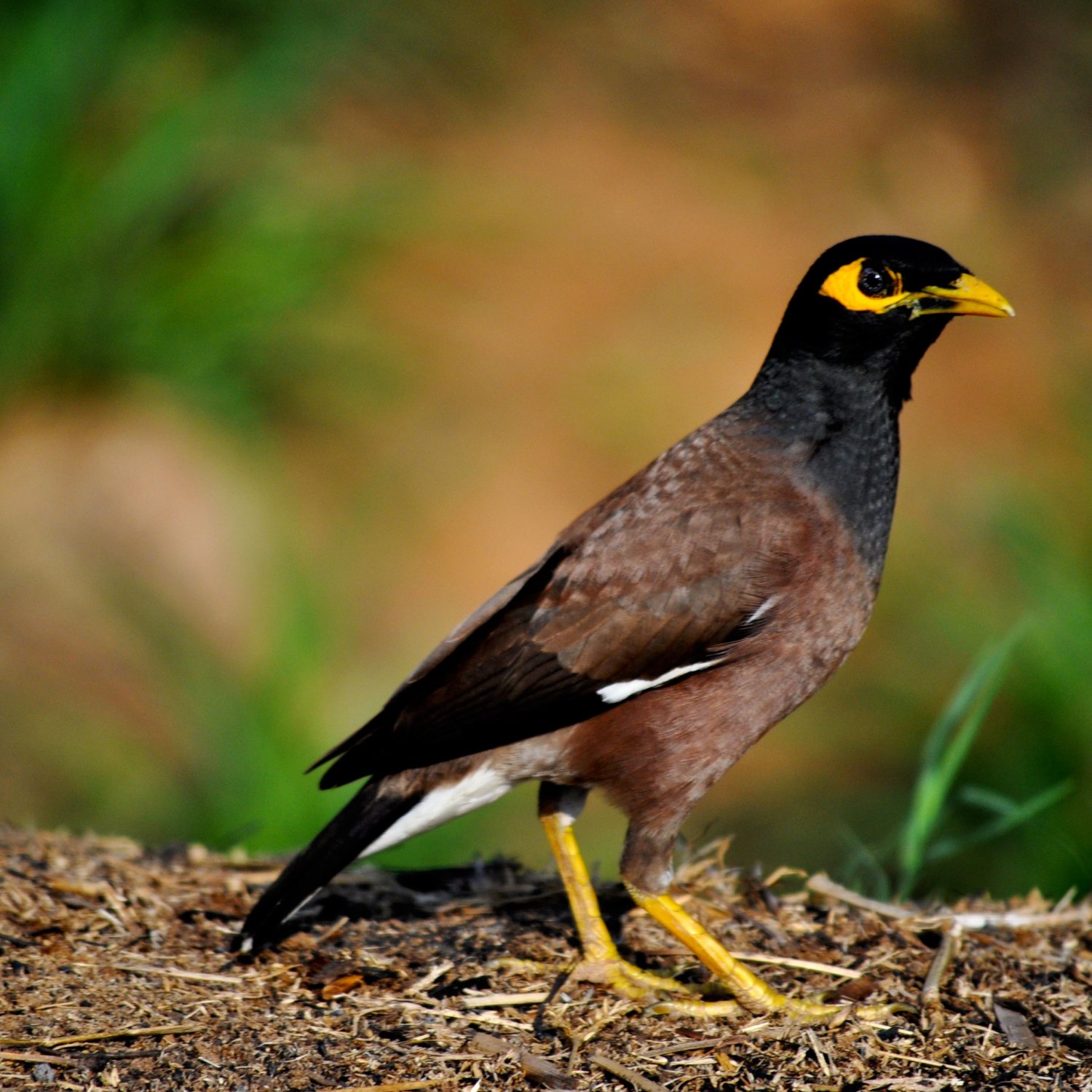
Myna Bird
25 - 29 cm
The Myna Bird, found in various countries such as India, Myanmar, and Australia, belongs to the Sturnidae family. These medium-sized birds have a sturdy body and a long tail, reaching a length of 25-29 cm. With their distinct features and vocal abilities, Mynas make unique and entertaining pets. #MynaBird #Sturnidae #PetBirds
Animal Details Summary:
Common Name: Myna Bird
Kingdom: Animalia
Habitat: Urban areas, woodlands, farmlands
Myna Bird: The Chatty Feathered Friend
Have you ever heard a bird mimic human speech? If so, there's a high chance you've encountered a myna bird. These clever and social birds are known for their ability to mimic sounds, including human speech, making them a popular choice among bird enthusiasts.But there's more to these chatty birds than just mimicking abilities. In this article, we'll take a closer look at the Myna bird, its characteristics, habitat, and interesting facts that make it a unique and fascinating creature Myna Bird.
Scientific Classification
Let's start with the basics. The scientific name for the Myna bird is Acridotheres tristis. It belongs to the animal kingdom, phylum Chordata, and class Aves (birds). These birds are classified under the order Passeriformes, which includes more than half of all bird species. And within this order, they belong to the Sturnidae family, commonly known as starlings.Habitat and Distribution
Myna birds are highly adaptable and can be found in various habitats, including urban areas, woodlands, and farmlands. They are native to Asia, Africa, and Australia, with their country of origin being India. However, due to their popularity as pets and their ability to thrive in different environments, Myna birds have been introduced to other countries, including Myanmar, Thailand, Malaysia, Indonesia, and Australia.Feeding Habits
Myna birds are omnivorous, meaning they eat both plants and animals Mekong Giant Catfish. In the wild, they feed on insects, fruits, seeds, and nectar. They are also known to scavenge for food in garbage bins and are often seen near human settlements, where they can easily access food scraps.As pets, Myna birds have a varied diet, including seeds, fruits, and insects. Additionally, they can also be trained to eat from the hand, making them even more interactive and friendly.
Appearance and Size
Myna birds are medium-sized birds, with a robust body and a long tail. On average, they measure between 25 to 29 centimeters in length. They have a mainly black plumage with a distinct yellow beak and eye patch. Some species also have white patches on their wings and tail, adding a pop of color to their otherwise dark appearance.Their sleek and glossy feathers, coupled with their bright yellow beaks, make them quite a striking sight. But what's even more impressive is their ability to change color. As Myna birds age, their yellow beaks turn orange, giving them a new look as they mature.
Unique Features and Behaviors
Besides their exceptional mimicking abilities, there are several other unique characteristics and behaviors that make Myna birds stand out from the rest of their avian counterparts.Firstly, these birds are known to be highly social and form strong bonds with their flock members. They are rarely seen alone and are often found in large groups, communicating through various calls and vocalizations.
Another interesting behavior is their grooming habits. Myna birds have a ritual of grooming each other, which serves as a form of social bonding. This grooming behavior involves picking at each other's feathers, removing parasites and keeping their plumage clean.
Although Myna birds are mostly known for their mimicry, they also have a repertoire of various calls and whistles, which they use for communication. Each member of the flock has a unique call, making it easier for them to identify their partners in a large group.
They are also highly territorial and will defend their nest and food sources from intruders. Additionally, they have been observed exhibiting mobbing behavior, where they come together to chase away larger predators, such as birds of prey.
Conservation Status
Unfortunately, Myna birds are facing threats to their population in some parts of their native range. The introduction of invasive species, habitat loss, and capturing for the pet trade are some of the factors affecting their numbers.However, there are also efforts being made to conserve these birds. In some countries, Myna birds are protected by law, and there are also campaigns to raise awareness and educate the public on their importance in the ecosystem.
The Myths Surrounding Myna Birds
It's hard to talk about Myna birds without mentioning the various myths and superstitions surrounding them. In some cultures, these birds are believed to be good luck, while in others, they are seen as a sign of bad omens.In India, for example, Myna birds are considered a symbol of love and devotion, due to a popular legend of a couple of Myna birds who chose to continue living in a human settlement rather than return to their natural habitat.
In Australia and the Philippines, however, they are seen as a sign of approaching death. And in Southeast Asia, Myna birds are thought to bring bad luck if they build their nests in front of a house.
These superstitions have no scientific backing, and the truth is, Myna birds are just like any other bird species, and their presence is simply a part of the natural world.
Conclusion
In conclusion, the Myna bird is a unique and fascinating creature, well-loved for its mimicry, social nature, and other interesting behaviors. However, it's crucial to remember that Myna birds are wild animals and should only be kept as pets by experienced bird owners who are willing to provide proper care and attention.As we continue to learn more about these birds, it's important to also raise awareness about their conservation and the threats they face. With the right measures in place, we can ensure the survival of these chatty feathered friends for generations to come.

Myna Bird
Animal Details Myna Bird - Scientific Name: Acridotheres tristis
- Category: Animals M
- Scientific Name: Acridotheres tristis
- Common Name: Myna Bird
- Kingdom: Animalia
- Phylum: Chordata
- Class: Aves
- Order: Passeriformes
- Family: Sturnidae
- Habitat: Urban areas, woodlands, farmlands
- Feeding Method: Omnivorous
- Geographical Distribution: Asia, Africa, Australia
- Country of Origin: India
- Location: Wide range of countries including India, Myanmar, Thailand, Malaysia, Indonesia, and Australia.
- Animal Coloration: Mainly black plumage with a yellow beak and eye patch. Some species have white patches on the wing and tail.
- Body Shape: Medium-sized birds with a robust body and a long tail.
- Length: 25 - 29 cm
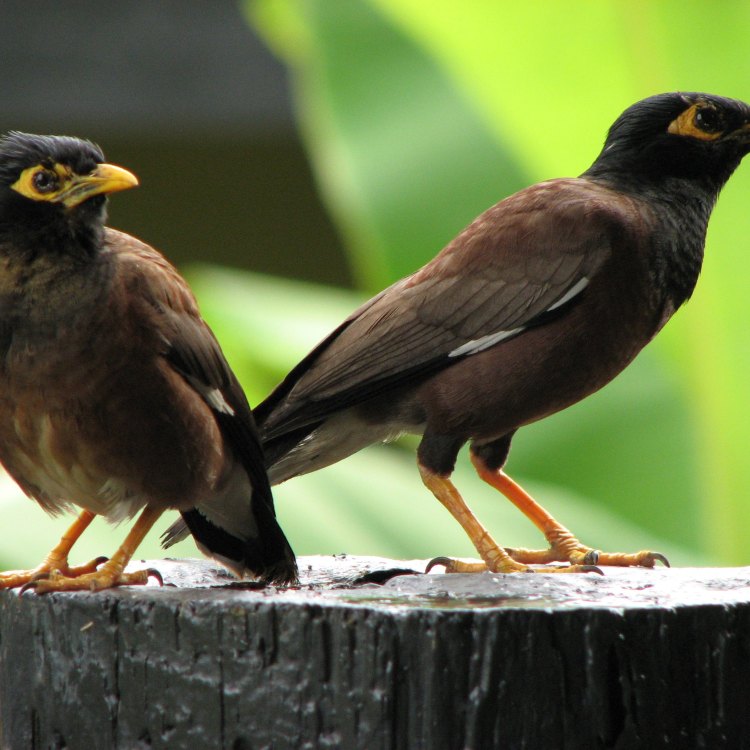
Myna Bird
- Adult Size: Small to medium-sized
- Average Lifespan: Up to 20 years
- Reproduction: Sexual
- Reproductive Behavior: Monogamous
- Sound or Call: Mynas are highly vocal birds with a wide range of calls including mimicry of other bird species and human sounds.
- Migration Pattern: Mostly non-migratory
- Social Groups: Live in small to large flocks
- Behavior: Active during the day, spend time foraging for food on the ground, and roost in trees or man-made structures.
- Threats: Habitat loss, hunting, competition with native bird species
- Conservation Status: Least Concern
- Impact on Ecosystem: Can negatively impact native bird species through competition for resources.
- Human Use: Popular as pets and often kept in cages.
- Distinctive Features: Yellow beak and eye patch, ability to mimic sounds and human speech.
- Interesting Facts: Mynas are known for their exceptional ability to mimic sounds and human speech. Some individuals have learned to imitate telephone rings and conversation.
- Predator: Birds of prey, snakes, and feral cats
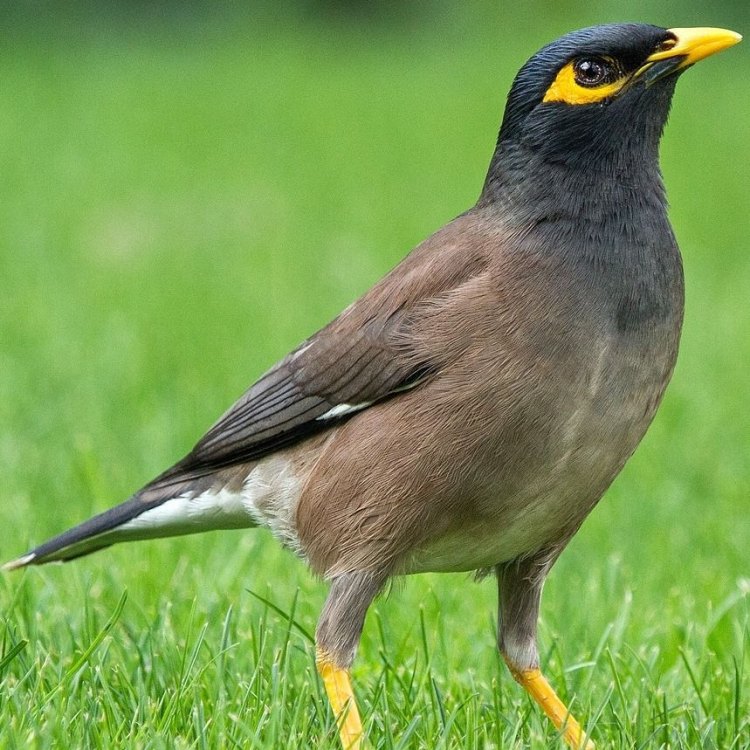
Acridotheres tristis
The Fascinating World of the Myna Bird: From Vocal Mimicry to Human Companionship
The Myna bird, also known as the Common Myna or Indian Myna, is a small to medium-sized bird that is native to Asia. This intelligent and highly vocal bird has captured the hearts and minds of people all over the world with its unique characteristics and abilities. Let's take a closer look at this fascinating bird and discover what makes it so special.The Basics
The Myna bird is typically around 9 inches in length and can weigh up to 4 PeaceOfAnimals.Com.5 ounces, making it a small to medium-sized bird. It has a distinct bright yellow beak and a yellow patch around its eye, adding to its charm and beauty. Its overall coloration ranges from brown to gray, with white patches on its wings and tail.The Myna bird can live up to 20 years, making it a long-term companion for those who decide to keep them as pets. These birds reach sexual maturity at 2-3 years of age and reproduce through sexual means. They exhibit monogamous behavior, meaning they mate with one partner for life.
Social Behavior
Mynas are highly social birds and live in small to large flocks. They are active during the day and spend their time foraging for food on the ground, using their powerful beak to dig for insects and seeds. At night, they roost in trees or man-made structures, such as buildings or streetlights Milkfish.One of the most intriguing aspects of the Myna bird's behavior is its vocalization. These birds are known for their wide range of calls, which includes mimicry of other bird species and even human sounds. This ability to mimic sounds and speech has made them popular not only in the wild but also as pets.
The Incredible Mimicry of the Myna Bird
Mynas are renowned for their exceptional ability to mimic sounds and human speech. Not only can they perfectly imitate other bird species, but some individuals have also learned to mimic human speech. Some Mynas have been recorded imitating telephone rings and conversation, making them fascinating and entertaining companions.This mimicry ability is due to the structure of the Myna bird's syrinx, a specialized voice box located at the base of the trachea. Their two vocal cords can vibrate independently, allowing them to produce a wide range of sounds and mimic various voices. Even though they lack vocal cords like humans, Mynas can still produce clear and precise human-like sounds.
The Impact on the Ecosystem
While the Myna bird's mimicry may be charming to humans, it can have a detrimental effect on the environment. These birds are not native to many places where they have been introduced, and they can compete with native bird species for resources. This competition can disrupt the balance of the ecosystem, affecting the populations of other birds.In some cases, Mynas have even been observed damaging crops and gardens, adding to the negative impact on the ecosystem. As such, careful management and monitoring are necessary to prevent these birds from causing harm to native species and their habitats.
Conservation Status
Despite their potential to disrupt ecosystems, the Myna bird is not currently considered an endangered species. In fact, they are classified as "Least Concern" on the IUCN Red List. This is due to their adaptability and ability to thrive in various environments, as well as their widespread distribution in Asia.However, this does not mean that Mynas do not face threats. Habitat loss, hunting, and competition with native bird species are all factors that can negatively impact their populations. As such, it is crucial to address these threats and take necessary conservation measures to ensure their continued presence in the wild.
Humans and the Myna Bird
The Myna bird has played a significant role in human culture and society for centuries. In some cultures, these birds are revered and considered sacred. In others, they are kept as pets and even trained to perform tasks, such as delivering messages. In fact, Mynas have been used in the past as messenger birds due to their ability to learn and mimic human speech.Today, Mynas are still popular as pets and are often kept in cages. Their intelligence and ability to mimic sounds and human voices make them fascinating companions. However, it is important to note that not all Myna birds make good pets. They require a specialized diet, ample space to exercise, and can be loud and messy at times.
Predators and Threats to the Myna Bird
Like all animals, the Myna bird does have predators in the wild. Birds of prey, such as hawks and eagles, are common predators of the Myna. Snakes and feral cats also pose a threat, particularly to their eggs and young.However, the biggest threat to the Myna bird's survival is human activity. Habitat loss due to urbanization and deforestation, as well as hunting for their feathers or as a food source, are all significant threats to their populations. It is crucial to raise awareness and take action to protect these birds and their habitats.
In Conclusion
The Myna bird may be small in size, but it is certainly not lacking in unique characteristics and abilities. From its vocal mimicry to its intelligence and social behavior, this bird has captured the hearts and fascination of people all over the world. While it may face threats and have a negative impact on the ecosystem in some cases, it is undoubtedly a remarkable creature that deserves our admiration and protection.
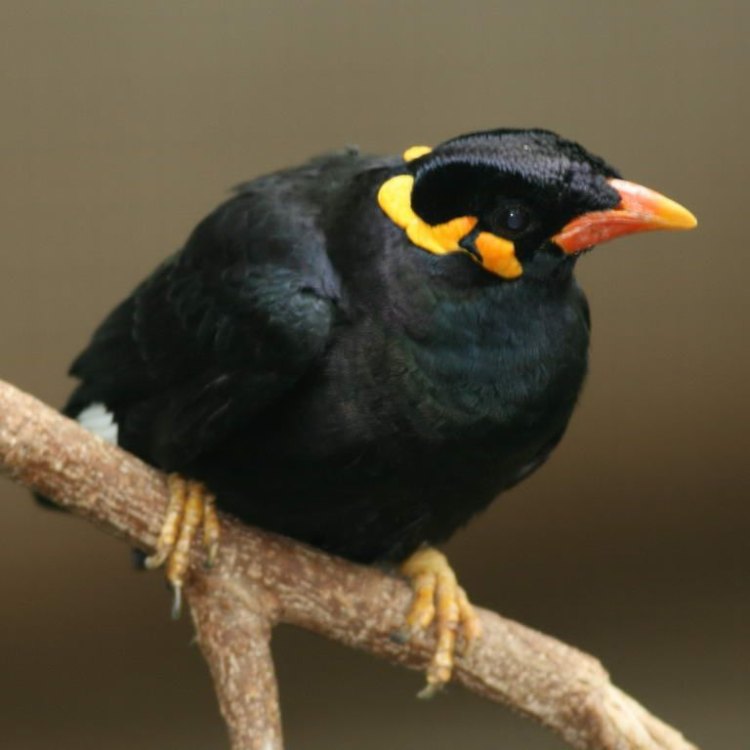
Myna Bird: The Chatty Feathered Friend
Disclaimer: The content provided is for informational purposes only. We cannot guarantee the accuracy of the information on this page 100%. All information provided here may change without prior notice.


